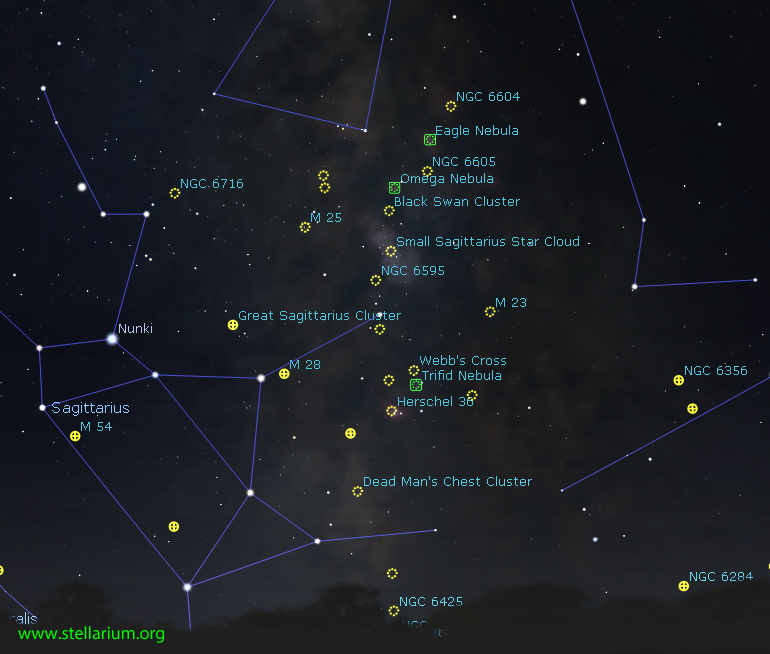The Perseid Meteor Shower
As we look forward to August nights, the Milky Way is nicely placed, high on the meridian. As dusk transforms the bluish sky to black, the stars Vega and Arcturus are the first to announce themselves. About an hour the familiar “teapot” outlining the constellation Sagittarius is found in the southern portion of the sky.
If you are vacationing at the cottage or campsite, take advantage of moonless nights to gaze upon the ghostly glow of the Milky Way or the Via Lactea. This is translated from the Latin meaning “the road of milk”. For those who have never cast their eyes upon the Milky Way, words cannot describe a first-hand encounter.
Wide angle binoculars will yield a treasure trove of star clusters and gaseous nebula including the globular cluster M22 as well as emission nebulas M16 – the Eagle Nebula, M17 – the Swan Nebula or Omega Nebula, and of course the combination of the Lagoon and Trifid Nebulas – M8 and M20. With today’s camera trackers armed with a DSRL camera and a wide lens, a few three to four-minute stacked images of the heart of Sagittarius can be jaw-dropping.

The Perseid meteor shower is the event of summer and earth is now passing through the dusty debris of Comet 109P/Swift-Tuttle. This comet measures 26 km wide and is a mountain of ice, dust, and gravel that last appeared in 1992 in its 133-year orbit around the sun. Swift-Tuttle will return in the year 2125, replenishing a fresh path of comet debris ejected from the comet’s surface as it gets close to the sun. In a typical year, 50 and 75 meteors can be seen per hour coming from the constellation Perseus. Sand size particles vapourize in the upper atmosphere at 59 km/sec.
However, the sky will be fully lit thanks to this year’s full Sturgeon Moon on August 11. Only the brighter meteors including a few bright fireballs will be seen dashing across the night sky thus reducing the overall numbers. A better chance to see the brighter fireballs will be on preceding nights before the peak. But still, it is a great time to look at the cosmos while on vacation or at the cottage.
Saturn will be in opposition on the 14th meaning it rises at sunset and sets at sunrise. It is also closest to earth. On that date, it will be 1.325 billion kilometres from us with light taking almost 74 minutes to reach our eyes. Jupiter rises two hours after Saturn. A couple of hours later, Mars makes its appearance. All three planets are now equally spaced far apart thus making a striking sight in the sky. Speaking about Jupiter, there will be a double shadow transit of Io and Ganymede just after 4 hours UT on August 16. Over the next hour and a half, these two inky black dots will slowly cross the Jovian cloud tops. The new moon occurs on August 27.
Until next month, clear skies everyone.
Gary Boyle
The Sky This Month - August 2022
eNews date:
Monday, August 1, 2022
Post date:
Wednesday, August 3, 2022 - 1:17am
Category:
